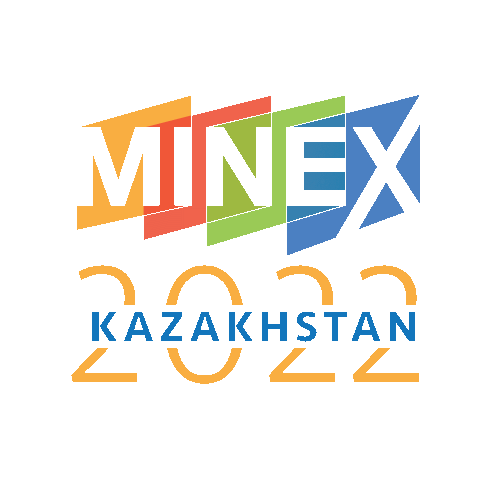Organised in partnership with Department of International Trade
Context
The decarbonisation of the global economy and the implementation of the UN Sustainable Development Goals (SDGs) drive changes in the Environmental, Social and Corporate Governance in the mining and metallurgical industry. Many mining companies in Kazakhstan are reviewing their sustainability strategies and are actively implementing technologies and projects that help minimise their environmental footprint, reduce CO2 emissions and waste, and use energy and water more resources efficiently.
Discussion themes
• Meeting the demand for sustainable development technologies in Kazakhstan and Central Asia.
• Sustainable technologies for underground mines, water supply, processing plants.
• Solutions for industrial energy and processing areas.
Context
In recent years, Kazakhstan has been actively modernizing mining and metallurgical industries using digital technologies. Today, almost all IT companies offer digital solutions that promise to increase productivity, profits, and planning efficiency. The question is, will the results of innovation meet customer expectations? Which solutions will really stimulate the growth of local mining companies with their unique specifics, and which ones will lead to unjustified costs? Successful implementation of digital products, as well as their compatibility and resilience to cyber risks, plays an important role in their selection.
Technologies proposed for discussion
• The use of machine vision and artificial intelligence to control ore quality and technological processes
• Predictive maintenance of equipment
• Optimisation of production processes using artificial intelligence
• Improving the safety of industrial transport
• Complete digital solutions from mine to factory
Context
Industrial digitalisation is one of the top drivers of the economic development of Kazakhstan. According to official estimates, virtually all mining operations in the country have a 10-15 percent potential to improve efficiency and reduce the cost of operations. At the small and medium-sized enterprises, this potential is 50% or greater. Many mining companies have developed digital transformation strategies and are exploring the possibilities of introducing 4.0 technologies to improve the efficiency of individual productions and supply chains. Digital technologies enable to streamline business processes and increase the overall return on investment. There are many areas for the use of digital technologies, however, the maximum effect can be achieved only in the case of a comprehensive implementation of information systems – a complete digital transformation of the individual companies and the whole industry.
Discussion themes
• Prospects for the digital transformation of the mining industry of Kazakhstan.
• Strategies and examples of digitalisation of mining and metallurgical enterprises.
• Prospects for the development of digital mines and autonomous production complexes.
• Application of the MES concept and digital tools for managing technological processes.
• Cases if automation and digitalisation of business management processes.
• Digitalisation of asset management and predictive maintenance and repair.
• Applications and benefits of 3D laser scanning for mining.
• AI in mine automation and cost optimisation.
• Mining Automation and robotics in practice.
• AI-enabled mining monitoring and diagnostics.
• Digitalisation of emission management and environmental monitoring.
• Building Information Modelling for mining and minerals projects – going beyond 3D modelling.

Organised in partnership with Aveva
Context
The mining industry plays a critical role in our lives. Today, we see an increase in global consumption for commodities due to upward trends in urbanization and industrialization. These growing demands will continue to drive the industries for many years. Digital transformation enables mining enterprises with smart and reliable tools for analytics, asset and business process management, data infrastructure, improving transparency and efficiency of operations throughout the entire value chain. AVEVA experts will talk about the most relevant digital solutions for the mining sector, while the key customers will share their insights and case studies.
Discussion themes
- Digital Mine: overview and roadmap.
- Value chain optimization – from pit to port.
- Reliability, safety, and operational efficiency of the mining enterprise.
- Data infrastructure is the basis for the digital plant. Opportunities and benefits of real-time data infrastructure used by more than 80% of the largest mining and metals companies in 87 countries around the world.
- Advanced Process Control for mining. Case studies.
Context
Minerals are not an endless resource. Between 2021-2025 The National Geological Exploration Project provisions the four times increase of the annual state funding of geological exploration in Kazakhstan. The government is developing new mechanisms to stimulate the participation of national and international companies in the search for new deposits and the development of promising areas. Considering the huge mass of land, the effectiveness of geological exploration in Kazakhstan largely depends on the use of advanced technologies. Besides explorers’ luck, modern geology relies on advanced technologies, comprehensive analysis of data, and the high competence of specialists.
Discussion themes
• First annual results national geological exploration project of Kazakhstan.
• Evaluation of exploration results and development scenarios for promising areas.
• New approaches and technologies for qualitative forecasting and evaluation of mineral resources.
• Application of 3D scanning and autonomous unmanned aerial vehicles in geological exploration.
• 3D underground surveys and 3D geological modelling.
• Prospects for wider use of aeromagnetic survey technologies using UAVs.
• Ground-based electrical surveys technology in action.
• Prospects for digitalisation of geological industry to increase prospectively and drive down the costs.

Organised in partnership with: SRK Consulting
Context
According to official data, about 8 thousand deposits are operating in Kazakhstan today. All of them were discovered back in the USSR times. But many of the deposits of lead, copper, and rare metals will be depleted in 10-15 years. Mine closures are associated with operational and social challenges. Once the mine is closed, the operating company is responsible for land and water reclamation as well as resolving environmental issues such as biodiversity conservation and restoration of pre-existing ecosystems. This is a technologically complex and costly process that is typically considered early in the design and development of a mine. Mines closures in Kazakhstan is a relatively recent development and practical experience in responsible mine closure is critical to the sustainable development of the industry and society. Social challenges in Kazakhstan are especially acute in the areas where purpose-built mining mono-towns are facing unemployment and population relocation. In the East Kazakhstan and Karaganda regions, closures of mines and mono-towns have already begun. It is assumed that in 5-20 years many mines in the East of Kazakhstan will be closed. This could potentiality lead to major socio-economic problems that need to be addressed urgently.
Discussion themes
• Estimates and forecasts of mine closures in Kazakhstan.
• How unique is the problem of mines closures in Kazakhstan and how they are managed in other countries?
• Subsoil use regulation changes applicable to mine closures in Kazakhstan. What’s new and how the new Environment Code works in practice?
• Implementation of the internationally accepted practices and guidelines of mine closure in Kazakhstan.
• Management of technogenic mineral deposits – regulation and practice.
• Technologies and best practices of construction and reclamation of tailings.
• Comprehensive planning and implementation of mine closure.
• Financing mine closure and post-mining rehabilitation in Kazakhstan.
• Ensuring the safety and stability of mining structures and facilities for further use.
• Reducing the social, environmental, and financial risks of mine closures and creating social, economic and cultural opportunities for the local population.
• Ensuring a socially responsible business practice and fulfilling obligations in relation to the released personnel.


